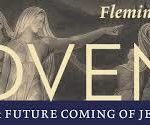Without a doubt, the best book I have ever read on the Sabbath is Mark Buchanan’s The Rest of God. In my opinion, it is a MUST READ.
He begins chapter 6 in a unique way. It includes a great lesson for preachers. To introduce a sermon, the illustration doesn’t have to capture the essence of the message. Sometimes all you need is unique thought to help you dive into the subject matter. The goal of an introduction is to intrigue your people enough to compel them to keep listening. Watch (read?) and learn how Buchanan leads us into the two Old Testament versions of the 10 commandments:
Michele has an identical twin, Nicole. Both are beautiful. Early on, I was always stumped by who was who and which was which. They’re mirror images: the high, fine cheekbones and the soft, dark eyes, the lilting cadence of speech, the delicate artistry and polished musicianship—these are perfectly duplicated in each.
Around that time, my daughters were captivated by a remake of the movie Parent Trap, in which actress Lindsay Lohan single-handedly portrays, with the help of special camera effects, identical twins. The story revolves around the twins’ elaborate scheme to pose as each other, a scheme so flawlessly executed that they fool their own parents.
Watching it with my daughters, I wondered if Michele and Nicole ever did that, pretended to be the other, just to mess with our heads. Back then, I figured I’d be an easy rube. But as I got to know the twins better (especially Michele, who goes to church where I’m a pastor; Nicole lives in another town and visits only from time to time), I began to see subtle but distinct differences. Their smiles are not exactly alike. They carry themselves with enough degree of difference that you can distinguish one from the other just by watching their postures, their gestures, their expressions, the way they walk. You can tell by listening to the timbre and texture of their voices.
In so many ways they are the same, yet in so many ways each is unique—it’s like hearing a single Mozart piece played by two different but equally proficient orchestras. I’ve known the twins, especially Michele, for close to a decade now. It would take great cunning indeed for me to mistake one for the other.
The Bible provides two complete renderings of the Ten Commandments, one in Exodus 20, the other in Deuteronomy 5. (Deuteronomy literally means “the second law,†or “the law once over.â€) The two renderings are virtually identical. They’re conjoined twins, separated by a clean, almost invisible cut. The two versions are so close that the slightest variations between them, like a birthmark on one that’s missing on the other, take on large significance. After long association, you can easily spot one from the other. The two Sabbath commands feature a crucial variation.
Exodus says this:
Remember the Sabbath day by keeping it holy. Six days you shall labor and do all your work, but the seventh day is a Sabbath to the LORD your God. On it you shall not do any work, neither you, nor your son or daughter, nor your manservant or maidservant, nor your animals, nor the alien within your gates. For in six days the LORD made the heavens and the earth, the sea, and all that is in them, but he rested on the seventh day. Therefore the LORD blessed the Sabbath day and made it holy. (vv. 8–11)
Deuteronomy says this:
Observe the Sabbath day by keeping it holy, as the LORD your God has commanded you. Six days you shall labor and do all your work, but the seventh day is a Sabbath to the LORD your God. On it you shall not do any work, neither you, nor your son or daughter, nor your manservant or maidservant, nor your ox, your donkey or any of your animals, nor the alien within your gates, so that your manservant and maidservant may rest, as you do. Remember that you were slaves in Egypt and that the LORD your God brought you out of there with a mighty hand and an outstretched arm. Therefore the LORD your God has commanded you to observe the Sabbath day. (vv. 12–15)
Exodus grounds Sabbath in creation. Deuteronomy grounds it in liberation. Exodus remembers Eden, Deuteronomy Egypt. In Exodus, Sabbath-keeping is about imitating divine example and receiving divine blessing. In Deuteronomy, it is about taking hold of divine deliverance and observing divine command. Exodus looks up. Deuteronomy looks back. Exodus gives theological rationale for rest, and Deuteronomy historical justification for it.
One evokes God’s character, the other his redemption. One calls us to holy mimicry—be like God; the other to holy defiance— never be slaves again. One reminds us that we are God’s children, the work of his hands, the other that we are no one’s chattel, not Pharaoh’s, not Nebuchadnezzar’s, not Xerxes’, not Beelzebub’s.
One is invitation. The other is warning.












